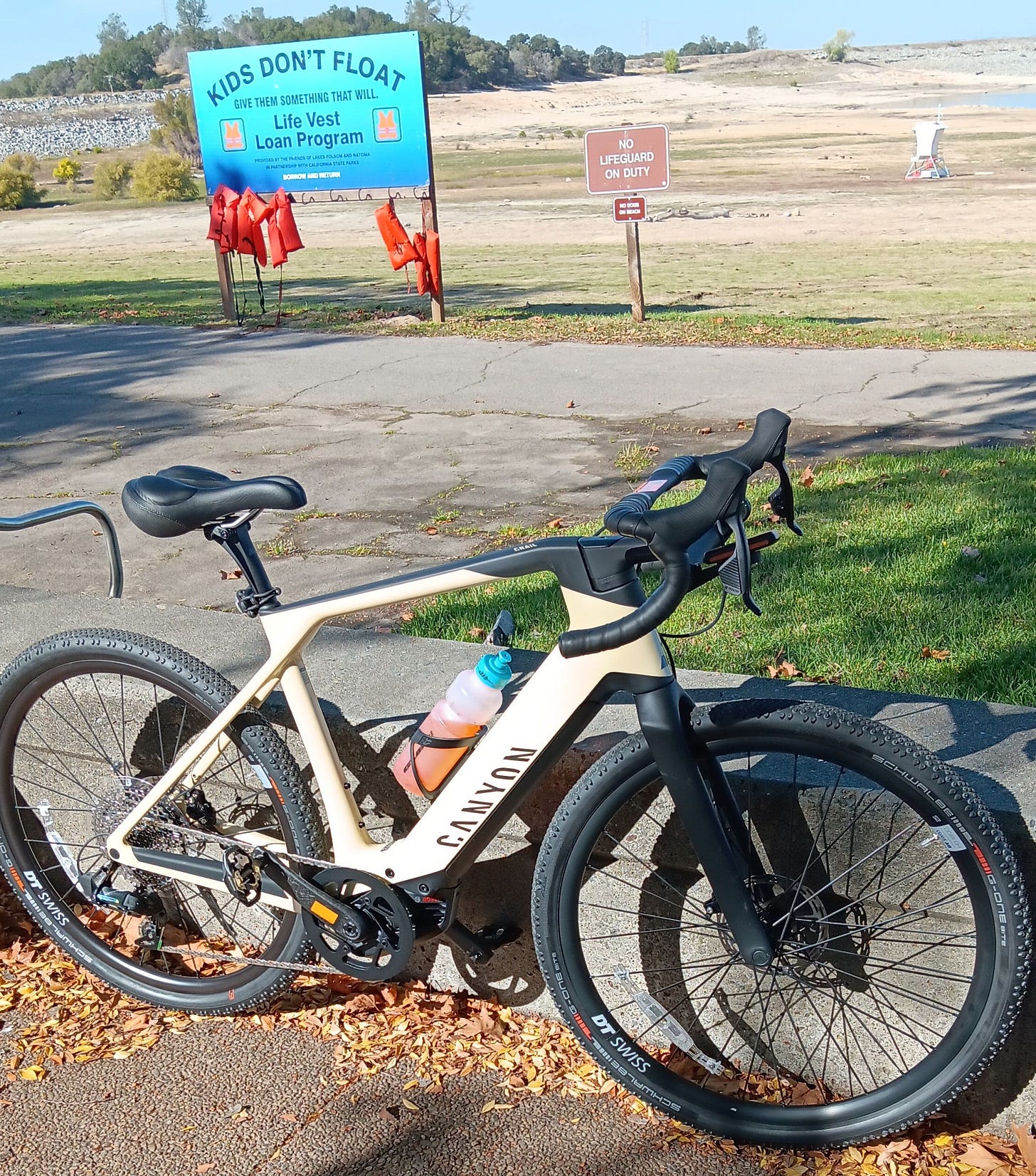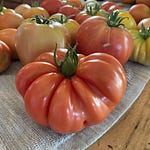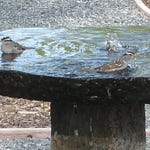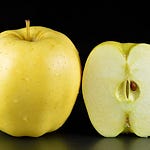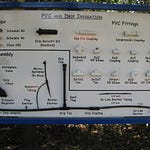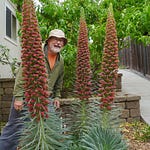Before we start digging through the mulch looking for termites, here is what you may have missed in last Friday’s (June 28) Garden Basics with Farmer Fred Podcast,
Ep. 346: All About Soil Thermometers, Soil pH, and Cardboard Mulch.
• Soil thermometers are precise measuring devices that need to be taken care of properly. They should not be left sitting in the soil or exposed to direct sunlight.
• The depth at which you measure soil temperature depends on what you are planting. For seeds, measure at a shallow depth, while for transplants, measure at a deeper depth.
• Some soil thermometers have a calibration nut that allows you to calibrate the temperature reading. This can be done by placing the thermometer in a glass of ice water and adjusting the arrow to read 32 degrees.
• Soil pH can vary at different depths, especially when using layered mulching techniques. It is important to wait for the layers to break down and mix together before relying on pH readings.
• Professional soil tests from reputable labs can provide accurate information about soil pH and nutrient levels. It is recommended to follow the specific instructions provided by the lab when taking soil samples.
• Cardboard can be used to smother grass and weeds when starting a new garden bed. It should be plain and unadulterated, and watered before being placed on the soil. It takes time for the cardboard to break down and create a suitable planting environment.
=========
After nearly five years of podcasts, here are the five most listened-to episodes of the Garden Basics with Farmer Fred podcast:
#5. Ep. 263 The Top Homegrown Vegetables, Pt 1
Farmer Fred and Master Gardener/vegetable expert Gail Pothour discuss the top 5 homegrown vegetables. They cover topics such as growing tomatoes, cucumbers, sweet peppers, beans, and carrots. They provide tips for beginners, including starting with easy-to-grow varieties and using supports for indeterminate tomatoes. They also discuss favorite tomato and pepper varieties and share tips for growing cilantro in the summer.
#4 Ep. 258 10 More Garden Quick Tips
Fred presents 10 more garden quick tips. The topics covered include creating a container garden, making a cheaper seed starting mix, storing and washing chicken eggs, taking better pictures of garden insects, growing small apples, and growing the Suncrest peach tree. The episode also features interviews with experts in the gardening field who provide valuable insights and advice. In this conversation, Fred discusses various gardening topics, including growing fruit trees in small spaces, warding off pests, propagating strawberry runners, improving drainage, and growing popcorn. He provides tips and advice on each topic, sharing insights from experts and personal experiences. The conversation covers a range of gardening techniques and practices that can be helpful for both beginners and experienced gardeners.
#3 Ep. 256 Container Gardening Basics
Fred interviews Pam Farley, author of the book 'The First Time Gardener, Container Food Gardening.' They discuss container gardening for beginners, including tips on choosing the right containers, ensuring proper drainage, and selecting the right plants. They also cover troubleshooting common issues in container gardening and provide a quick planting guide for vegetables, fruits, and herbs.
#2 Ep. 266 Cucumber Growing Basics
This conversation with America’s Favorite Retired College Horticulture Professor (and cucumber aficionado), Debbie Flower, covers topics such as cucumber varieties, growing techniques, harvesting tips, and how to prevent bitterness in cucumbers. The episode also touches on the importance of bees in pollinating cucumber flowers and discusses common pests and diseases that can affect cucumber plants. They provide recommendations for trellising cucumbers and share favorite cucumber varieties. In this conversation, Fred also provides recommendations for further reading and resources.
#1 Ep. 319 How to Plant and Care for a Shade Tree
Consulting arborist Gordon Mann joins Fred and shares his expertise on planting and caring for shade trees. They discuss the importance of choosing the right spot with good soil, proper planting techniques, and the long-term care required for tree health. They also emphasize the role of soil in tree growth and the need for organic matter and mulch. The conversation covers topics such as tree watering, root pruning, and the correct way to plant a tree. Overall, the episode provides valuable information for homeowners looking to plant and care for shade trees. They also delve into the topic of tree pruning, emphasizing the need for proper pruning techniques and debunking common misconceptions. The conversation concludes with a discussion on the importance of tree diversity and the role of water management in tree care.
Mulch vs Termites
From the garden e-mail bag, Carol wants to know: “We mulch all over the place, but all those wood chips got me thinking about termites! Has anyone mentioned a problem with the little guys? We keep the chips away from the wood siding, but how far is far enough? Any thoughts?”
My first thought is: mulch is good. A layer of organic mulch, such as wood chips, chipped/shredded tree limbs, compost, or straw, applied a few inches thick around (but not touching) the plants in your garden and walkways, has a lot of benefits.
Mulch retains moisture; it keeps soil temperature constant; it reduces plant stress; mulch suppresses weeds; organic mulch will gradually increase soil organic matter; it attracts beneficial organisms that improve soil fertility and porosity; mulch encourages healthier plants; it reduces the needs for pesticides and fertilizers; mulch protects roots and plants from mechanical injury; and applied on a hillside to thwart the development of flammable weeds, mulch can suppress the spread of brush fires.
Worrying about introducing termites to your yard via a load of mulch is a waste of worry wrinkles. Former college horticulture professor Debbie Flower and I talked about this in an episode of the Garden Basics podcast (Ep. 284 “Ranking Garden Mulches”), because it is a good question for anyone wondering if that load of chipped/shredded tree parts (my favorite form of mulch) that is dropped off in front of your house might contain termites.
“There could have been a pest or disease in that plant that was taken down,” explained Flower. “But all research has shown that those diseases and insect pests, as well as fungus and bacteria, do not survive the process of the chipping and then the moving of the pile. They rely on the intact plant to live. Termites don't live in wood mulch. They rely on bigger pieces of wood, not on this chipped-up stuff that's piled up with lots of air between it. It gets wet, it dries out, it's a very different environment that termites don’t like. The diseases, as well as the insect pests that may have caused the demise of the tree do not survive this process, so they don't come to your house.” You can hear our entire conversation about mulch in today’s newsletter podcast (above).
University research agrees with that assessment. However, there are some warnings.
The University of Florida cautions users of mulch to only apply a thin layer of mulch – or none at all – next to the foundation of the house or outbuildings. Thick, consistently wet mulch can provide a living bridge from the mulch pile to the wood foundation of a house.
Iowa State University points out a problem with termite species that might live in the soil in that state, but still say mulch is a good thing. “Does this mean, as some pest control advertisements claim, that mulch attracts termites to your home or that the mulch somehow causes termites? The answer to both questions is, ‘no.’ In the field, termites were detected with equal frequency beneath mulches of eucalyptus, hardwood, pine bark and pea gravel, as well as bare, uncovered soil. Sustained activity over time was significantly higher beneath gravel mulch.”
Linda Chalker-Scott of Washington State University agrees, but also warns about using cardboard as mulch, which can attract termites: “Many people believe that they shouldn’t use wood chip mulches around their house for fear of attracting termites to their home. This is not true. Termites are not attracted to wood-based mulches, they prefer higher nutrient woody materials like cardboard. If termites were in the tree when it was chipped to make mulch, the termites would have died through the process and will not be introduced into your garden from the mulch. However, if you have an established termite population in the ground surrounding your garden, wood chip mulch can be a bridge from the soil to the structure. If you are concerned with termites around your garden, it would be best to consult a professional to set up monitoring or barrier control methods around your home.”
I would add that keeping mulch 12 inches away from the foundation, allowing that area to occasionally dry out, will dissuade termites from entering that non-moist environment.

Thanks for reading Beyond Basics: The Garden Basics with Farmer Fred Newsletter! Subscribe for free to receive new posts and support my work.
Thank you for also listening to the Garden Basics with Farmer Fred podcast! It’s available wherever you get your podcasts. Please share it with your garden friends.
Fred Hoffman is also a University of California Cooperative Extension Master Gardener in Sacramento County. And he likes to ride his bike(s).





